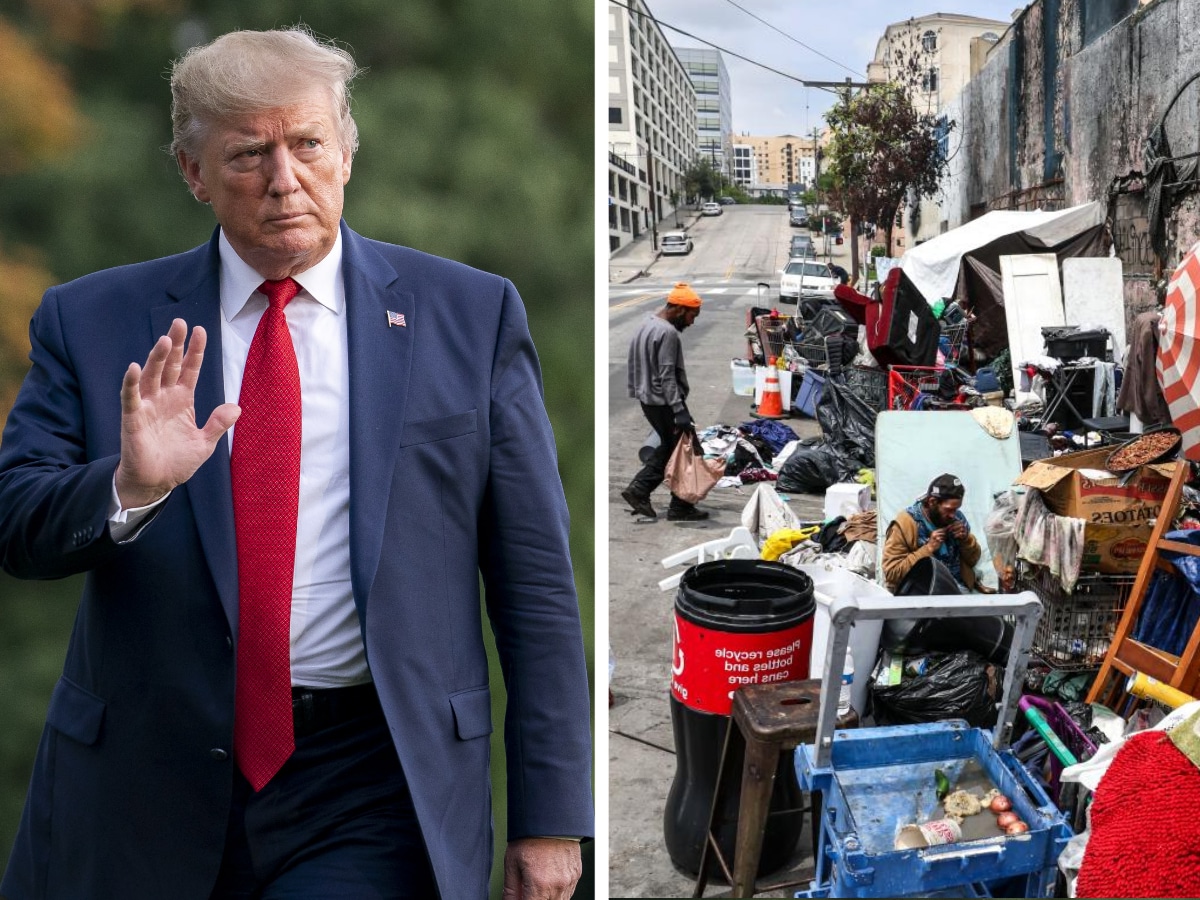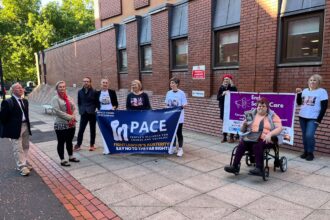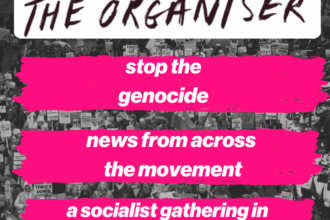On 29 October, the New York Times reported on a ‘service campus’ in the state of Utah. This so-called ‘campus‘ will house up to 1,300 homeless people, with many housed against their will. The plan closely aligns with plans set out by Donald Trump, and this begs a question: given that the president clearly doesn’t care about homeless people, what’s in it for him?
As of right now, it looks like it’s a favour to wealthy supporters and corporate interests.
Trump plan: Warehousing
In Utah, they’ve criminalised rough sleeping. If you’re a UK reader thinking this is backwards, you should be aware it’s technically still illegal in the UK because of the Vagrancy Act 1824, although that is set to change in Spring 2026.
The new facility will provide homeless people with an option besides jail, and as the Times reported:
the facility will also hold hundreds of mentally ill homeless people under court-ordered civil commitment and the effort will include an “accountability center” for those with addictions.
Conveniently, the plan draws attention away from the reasons why homelessness is increasingly rife in the US.
As reported in 2024, the number of homeless people in the US increased by 18% when compared to 2023 (which itself was 12% higher than 2022). The government at the time blamed “high housing costs, natural disasters and a spike in migration to large cities“. Potential solutions to these problems include:
- Lowering housing costs.
- Tackling climate change.
- Using the heft of the US empire to elevate other countries instead of wilfully impoverishing them (and as a result reducing the number of people who feel like they have no better option than to migrate to America).
Trump isn’t going to solve these problems; he’s going to make them worse.
As such, the approach he’s taking to homelessness is an ethos of ‘out of sight, out of mind’.
No beds, no chance
The Utah facility will sit on the outskirts of Salt Lake City. Some are criticising the location, although there is an argument that this is the best place for a rehab facility, with one homeless man telling the Times:
How do you stay clean when you’re surrounded by people you’ve been dirty with?
The question is whether it’s a serious attempt at drug rehabilitation, or whether it’s what people suspect – an effort to ‘warehouse’ a homeless population that rich people see as unsightly.
Speaking on this, the Times reported:
“I’m super anxious about it,” said Jen Plumb, a physician and Democratic state senator who calls the promise of high-quality medical care “pie in the sky.”
Utah already has a severe shortage of psychiatric beds, she noted. The legislature is unlikely to fund hundreds of new beds, she said, and even if it did, there is no work force to staff them.
Without enormous new spending, she said, the center could function less as a treatment facility than “a prison or a warehouse.”
Nationwide
In July this year, Trump issued an executive order which expanded powers to ‘treat’ homeless people against their will. As the Times noted, the Utah facility isn’t the only example of Trump’s muddled thoughts becoming manifest:
As New Orleans prepared for this year’s Super Bowl, state police moved more than 120 people from downtown to a distant warehouse hastily converted for three months into a shelter.
San Diego enforces a camping ban punishable by arrest while designating two tent sites with a total of 800 beds as an alternative to the street. But a recent lawsuit faults the sites for “inhumane” conditions, including rats, mold, and risks of fires and floods.
In Las Vegas, a $200 million homeless campus is under construction, with half of the money coming from the casino industry amid concerns that homelessness depresses tourism. It promises 900 beds across 26 acres with intensive services, and coincides with new prohibitions on sleeping in public, punishable by up to 10 days in jail.
You’ll notice things are happening because corporate interests are willing it to.
The question is who will profit from all this?
The Prison Industrial Complex
An obvious point of comparison is the ‘Prison-Industrial Complex’ (PIC). The abolitionist group Critical Resistance describe the PIC as the system which encompasses:
overlapping interests of government and industry that use surveillance, policing, and imprisonment as solutions to economic, social and political problems
As Tufts note:
Current estimates indicate that there are approximately 2.3 million people incarcerated in the United States, with an additional 4.5 million people on probation or parole. The US has the world’s highest incarceration rate and, despite representing under 5% of the global population, the US holds almost 20% of the global prison population
There’s a very good reason for maintaining such high incarceration rates if you’re a capitalist, and that reason is profit.
In 2023, the American prison system had an estimated turnover of $74bn, which ‘eclipsed the GDP of 133 nations’ according to SmartAsset. They added:
What is perhaps most unsettling about this fun fact is that it is the American taxpayer who foots the bill and is increasingly padding the pockets of publicly traded corporations like Corrections Corporation of America and GEO Group.
Clearly corporations will seek to profit from the incarcerated homeless population.
After all, they’re already making bank on homeless people already.
Battery farming humanity
Clearing homeless camps has proven lucrative for businesses. In 2024, the Guardian reported that private firms in California had made $100m clearing these camps, which was a ‘dramatic expansion’ compared to the early 2020s.
10 years earlier in 2014, Vice reported that opportunistic developers were making huge profits providing housing in New York:
At Freedom House on West 95th St, the city pays more than $3,000 per month in some cases for rooms and services that residents say are inadequate. Housing Solutions USA, a non-profit with ties to notorious former slumlords, also lists this address as their location. Photo by Ben Hattem.
In late 2013, then-comptroller John Liu called on the city to stop housing people in Aguila’s facilities after uncovering accounting problems and unsafe and unsanitary practices at their shelters. In August this year, DHS awarded the company another $15 million contract.
The city could have saved significant amounts over the years by owning and operating its own facilities. Instead, by 2021, New York had spent $3.5bn on private options which were “poorly maintained and unsafe“.
Dystopian
If warehousing homeless people becomes the norm, an industry will form around these facilities. Once that industry exists, there will be an incentive for these companies to expand, and the only way that can happen is if the homeless population grows. This will unleash hundreds of well-paid lobbyists whose mission is to ensure politicians don’t back policies which reduce poverty.
In other words, the Homelessness Industrial Complex is coming.
Featured image via RawPixel













